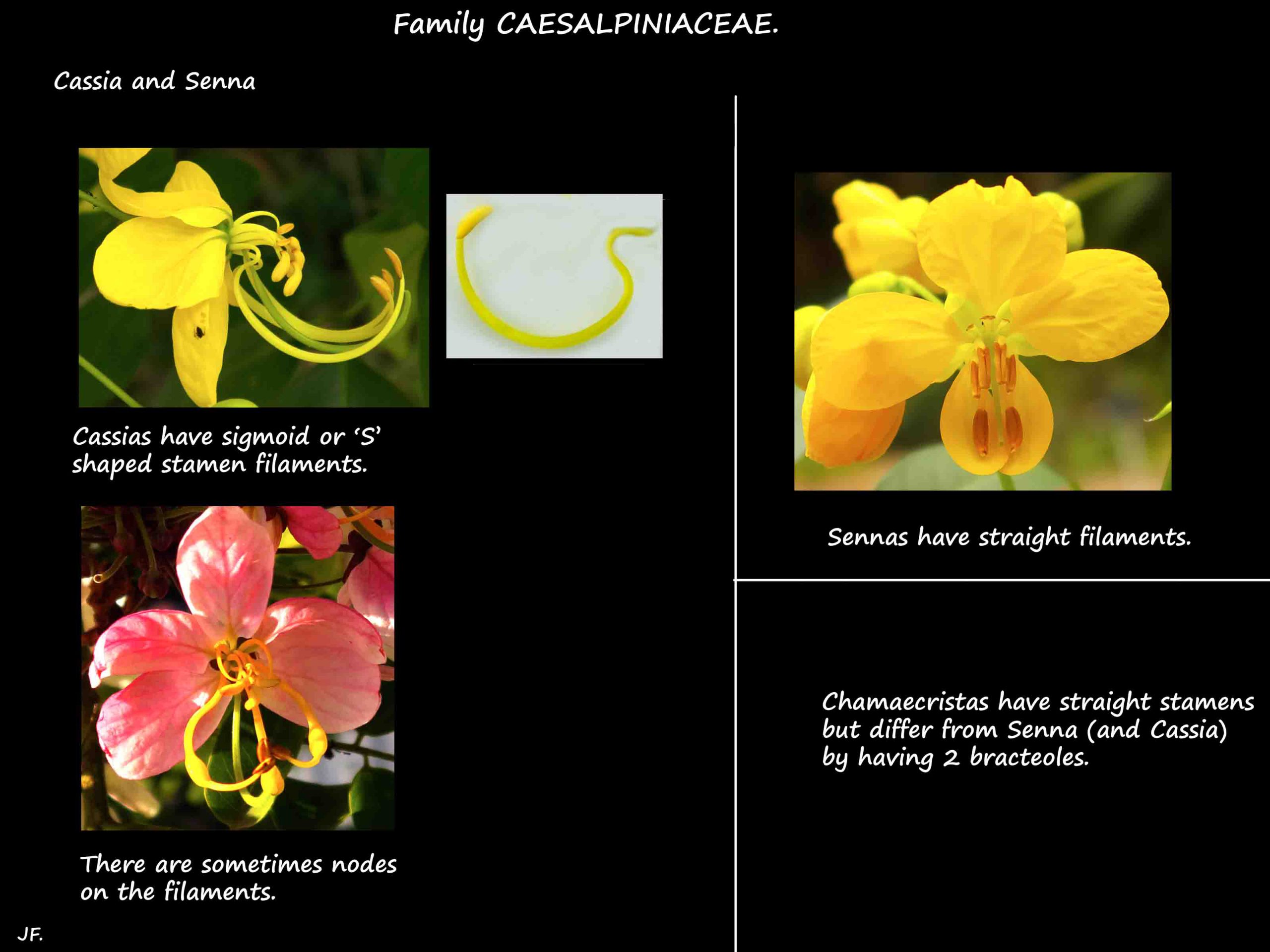Cassia.
Family Caesalpinaceae (Subfamily Caesalpinioideae in a loosely defined Family Fabaceae s.l.
Cassia used to be a loosely defined genus with over 600 species.
It is now divided into three genera – a strictly defined Cassia s.s with 20 to 40 species and
the rest roughly equally divided between Senna and Chamaecrista.
They can be separated by:
If the 3 long stamens filaments have an ‘S’ shaped curve they are CASSIA.
If the filaments are straight or a simple arcuate curve they are either Senna or Chamaecrista.
If the pollen sacs are hairless and the pods are indehiscent or do open but without the sections coiling up they are SENNA.
If there is a marginal fringe of minute hairs on the pollen sacs and the pod sections coil up they are CHAMAECRISTA.
(From Flora of Australia Vol 12 pages 78 – 80.)
Many species have been moved between the genera and the same plant can still be seen under 2 or even 3 of the genera.
****************************
Cassias are mostly trees and shrubs with some herbs.
Alternate leaves are mostly pinnate with opposite (sub opposite) pairs of leaflets.
There is no terminal leaflet (parapinnate).
There are no thorns and there may or may not be stipules or glands.
Inflorescences can be terminal or axillary.
They can be large or small clusters or spikes of bisexual flowers.
Many are racemes which are long or short unbranched inflorescences with the flowers, on pedicels
opening from the bottom up.
The pedicels have 2 small bracteoles at the base.
Flower parts are in 5’s with the sepals and petals being free.
Petals are mostly yellow but can be white, red, pink or orange.
There may be a small hypanthium.
There are almost always 10 stamens of different lengths.
They can all be fertile or some may be reduced to infertile staminodes.
Anthers open via pores or a short slit.
A common configuration is:
: the upper 3 are infertile staminodes with short almost straight filaments,
: 4 longer fertile stamens with almost straight filaments and anthers with basal pores and
: the lower 3 are long stamens with ‘S’ shaped filaments and anthers with basal or apical pores.
The three long fertile stamens sometimes have a swelling or node near the centre of the filament.
The flattened, curved ovary may or may not be on a stalk.
There are numerous ovules in the single locule and there is a single style and stigma.
The fruit are commonly flat or cylindrical, dehiscent or indehiscent pods.
The many seeds typically lie transversely and are sometimes separated by septa.
Seeds are often flattened.
Many species are similar, some have a number of subspecies or varieties and there are numerous hybrids and cultivars.
J.F.


